Step-by-step instructions on how to plant raspberries in spring correctly for beginner gardeners
Planting raspberries is a simple matter, but it requires meeting deadlines. It is important to do it before the onset of sap flow and heat. In the south of Russia, planting work begins in March, in the middle zone - in April, in regions with harsh weather conditions - in June. How to plant raspberries in the spring, which method is best for this, how to care for raspberries in the future and how to avoid mistakes, read the article.
Planting raspberries in spring
Raspberries are an unpretentious and popular crop. It is grown everywhere, and planting dates are determined depending on weather conditions in the region.
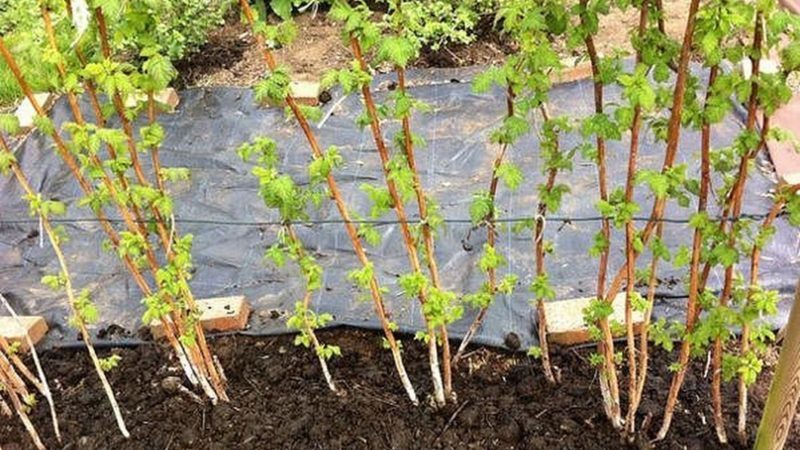
Most gardeners prefer to plant young bushes in the spring. The main advantages of spring planting are that the seedlings grow strong and healthy and take root quickly due to the warm weather. Before the onset of cold weather, young plants have time to form a stem, fruit buds, and adventitious roots. Thanks to this, many fruit-bearing shoots will appear on the bush next season.
Reference. In spring, ordinary and large-fruited raspberry varieties are planted.
Autumn planting is carried out in the event of an early and dry spring, since in conditions of lack of moisture the plant will quickly dry out.
When to plant raspberries
In the south of Russia With its mild climate, planting is often done in the fall. The seedlings manage to take root in a new place before the onset of the first frost. In spring they quickly grow and actively gain green mass.Those who prefer spring planting begin preparatory work in March - early April.
In the north and in the regions middle zone Raspberries are planted in the spring, not earlier than April. This time of year is characterized by high humidity, which stimulates the survival of young plants in a new place.
In the Urals and Siberia Raspberries are planted in late April - early May.
Favorable days according to the lunar calendar in 2020 and 2021
Many summer residents use the lunar calendar to determine the optimal time for planting raspberries.
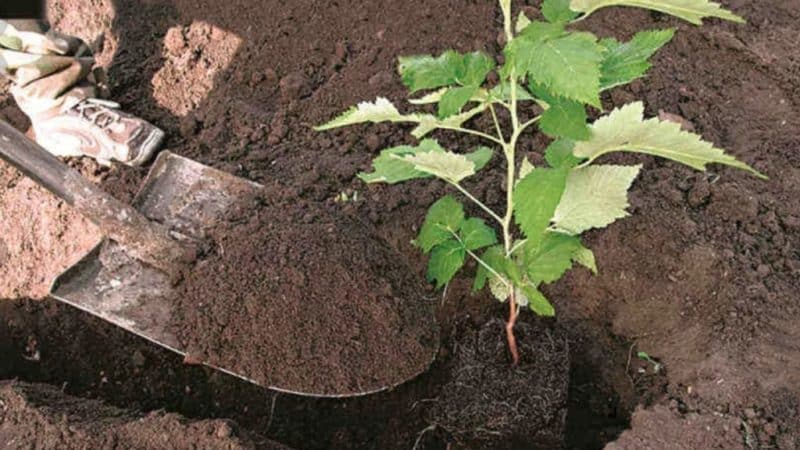
Favorable days in spring 2020:
- March - 26-29;
- April - 11-15, 24, 25;
- May - 2-10.
Unfavorable dates are considered to be the days of the full moon and new moon, as well as when the Moon is in Aquarius, which is considered the most barren sign.
Unfavorable days in spring 2020:
- March - 9, 19-21, 24;
- April - 8, 15-17, 23;
- May - 7, 13-14, 22.
Favorable days for spring planting in 2021:
- March - 4, 7, 17, 18, 22, 23, 26-30;
- April - 13-15, 19, 28;
- May - 4, 7, 16-18, 22, 23, 30.
Unfavorable spring days in 2021:
- March - 1-5, 13;
- April - 1-3, 11, 12;
- May - 1-11, 27-31.
Choosing a landing site
Raspberries can grow and bear fruit in one place for a long time and rarely need replanting. The place for planting seedlings should be well lit by the sun and protected from cold, gusty winds. Raspberries are often planted along the walls of a house or fences. The culture can grow in shaded places, but the shoots will constantly seek the sun and form buds on the young tops. These buds will freeze in winter and will not produce the expected harvest in summer.
The best neighbors of raspberries are fruit trees such as plum, apricot, and apple trees. It is not recommended to plant shrubs next to black and red currants.Raspberries will inhibit their development, which will lead to a decrease in yield.
In alkaline and too acidic soil, the crop stops growing and developing and does not bear fruit. It is not recommended to plant raspberries in an area where raspberries were previously grown. Fungal spores and pest larvae often remain in the soil. You cannot plant bushes after strawberries, since both crops have a common enemy - the raspberry-strawberry weevil.
Preparation of planting material
The future raspberry harvest depends on the quality of the seedlings. When choosing them, it is recommended to pay attention to the rhizome - it must be fully developed. The root system of a healthy seedling is fibrous, about 15 cm long.
For those new to gardening, seedlings with closed roots are available for sale. They are sold in pots or dark bags with soil. Such seedlings are carefully inspected before planting, dry, rotten and damaged roots are cut off. The rhizome is then dipped into the clay mixture and left to dry in the open air.
Soil preparation
The ideal soil for raspberries is light loam with low acidity 5.5-6.5 pH. It is prepared in the fall. The list of mandatory procedures includes digging to a depth of 30-40 cm, removing weeds, feeding wood ash. Experienced gardeners recommend sowing green manure (lupine, clover, flax, oats, rye), and in the spring mowing and planting in the ground.
Before planting raspberries on sandy loam or sand, the soil is additionally fertilized with organic matter - 6-8 kg of humus or manure per 1 square meter. m. In combination with organic fertilizers, potassium fertilizers (30-40 g per 1 sq. m) or superphosphate (50-60 g per 1 sq. m) are often used.
How to plant raspberries in spring
Raspberries are planted in two ways - bush and trench. Let's tell you more about each.
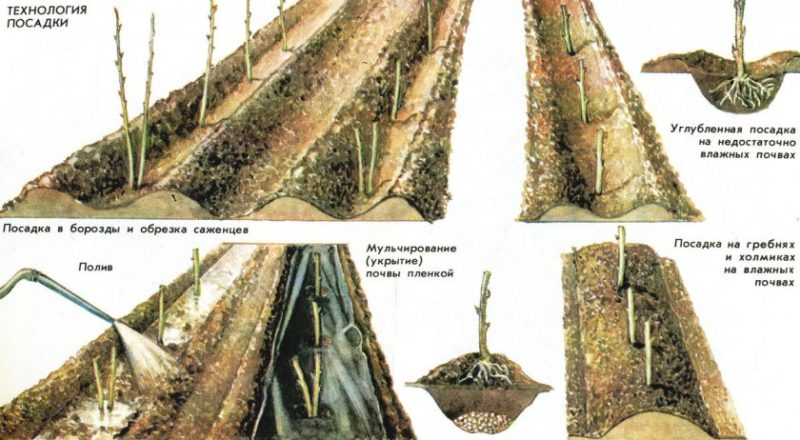
Bush method
In another way, this method is called planting in holes, in which the bush is formed by 6-12 developed stems. Seedlings are placed around a support. The distance between the bushes is 50-70 cm, and the row spacing is 1.5-1.8 m. The distance can be increased depending on the raspberry variety. Some require more space as their shoots grow large.
2-3 weeks before planting, prepare holes 30-40 cm deep and wide. Add 10 liters of rotted humus mixed with soil to each of them.
You can add to the nutritional mixture:
- 50 g superphosphate;
- 30 g potassium sulfate,
- 100 g bone meal;
- 200 g wood ash.
5-10 cm of clean soil is poured on top and the seedling is placed, carefully straightening the roots. The root collar is not deepened when planting. The tree trunk circle is leveled and mulched with hay, straw, peat, and dry leaves.
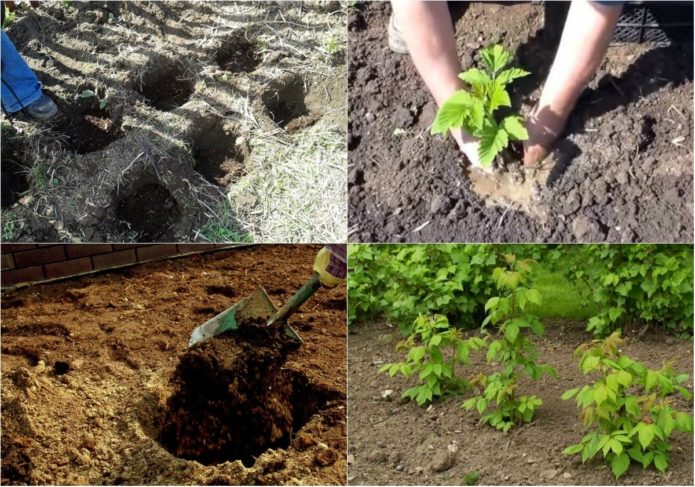
Belt method
The tape method is the most common, but more labor-intensive. The bushes are planted in prepared trenches, which gives the raspberry garden an aesthetic appearance and allows you to collect more berries than when grown using the bush method.
The distance between seedlings is 30-50 cm, the row spacing is 1.8-2 m. A trench 0.4 m deep is dug on the site. A mixture of 30 g of superphosphate, 20 g of potassium salt, 3 kg of manure is thrown to the bottom at the rate of 1 sq. m. 5-10 cm of clean soil is poured on top.
Sequencing:
- Make a hole in the soil so that the rhizome fits.
- The ground is watered with clean water, the seedling is installed vertically.
- A support is placed next to each seedling and tied up.
- The roots are completely covered with soil and lightly compacted.
- The bushes are watered abundantly and the soil is kept moist for 2-3 days after planting.
The trenches are located from south to north so that the eastern part receives a sufficient amount of sunlight in the morning, and the western part in the afternoon.
The nuances of planting remontant raspberries

How to plant remontant raspberries correctly? The advantage of these varieties is that starting from the end of August and ending in mid-September, the first fruits form on annual shoots. At the end of the season, the above-ground part of the stem is removed, which, in turn, significantly increases the plant’s immunity.
Repairing raspberries planted in the same way as a regular one - in a strip or bush way. In the south, planting is carried out in the second ten days of March, in the middle regions - at the end of March, in Siberia and the Urals - in mid-summer.
The site is selected at a distance of 0.5-1 m from outbuildings and fences. This will make caring for the bushes easier in the fall.
Remontant raspberries prefer drained loam. Before planting, the soil is intensively loosened, watered and fertilized with peat or humus.
A distance of 30-60 cm is maintained between seedlings. When planting using the bush method, two seedlings are placed in each hole.
Further care
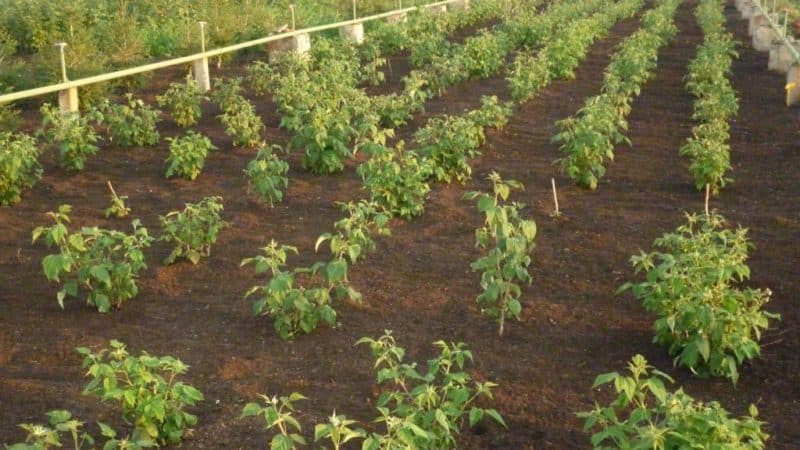
Caring for raspberries is as follows:
- After planting, the seedlings are shortened up to 15-25 cm, if they were not trimmed by the seller. Without this procedure, the plant will spend all its energy on growing green mass, which will lead to depletion of the rhizome. Replacement buds do not form on the roots, from which young shoots should appear in the new season.
- The tree trunk circle is mulched hay, mown grass, peat, sawdust. The layer height is 5-7 cm. This prevents the appearance of a dry earthen crust, which slows down the penetration of moisture and nutrients.Mulch inhibits the growth of weeds and acts as an organic fertilizer.
- Raspberries, especially remontant ones, love moisture, therefore one of the main tasks of the gardener is to provide it with regular, abundant watering. To maintain an optimal moisture level, it is recommended to install a drip irrigation system, and on especially hot days, arrange sprinkling.
- If you follow the recommendations for fertilizing the soil when planting, you do not need to feed raspberries in the next 2-3 years. Next, organic matter (wood ash, humus) and potassium-phosphorus fertilizers are added to the soil.
- In the fall after harvest or in early spring, bushes are pruned. The main work is carried out in the fall, and in the spring - sanitary pruning.
- To limit the growth of shrubs and reduce care procedures at a minimum, it is recommended to bury slate sheets between the rows, roofing iron or any other similar material to a depth of 0.5 m.
- In regions with a harsh climate, the bushes are tilted towards each other and tied so that frost does not damage the shoots. Tarpaulin or agrofibre is used as a covering material.
- If the raspberries are planted as bushes, the shoots are tied in a fan-shaped manner so that they do not break under the weight of the fruit. To do this, two pegs are driven between the bushes, to which shoots of neighboring bushes are tied at different heights. When planting using the tape method, a trellis garter is used: several rows of wire are tied to the supports and the shoots are fixed so that they are positioned at a slight slope.
- First spring pest control performed after the shoots grow to a height of 15 cm. For spraying, use a solution of “Karbofos” or colloidal sulfur, an infusion of tansy, garlic, and onion peels.
Mistakes when growing raspberries
Despite the fact that raspberries are very unpretentious, novice gardeners face some problems when growing them.
Let's look at typical mistakes:
- planting low-quality material;
- non-compliance with planting deadlines (too cold or too hot);
- choosing a shaded area;
- non-compliance with crop rotation rules;
- planting in soil poor in nutrients;
- thickened planting of bushes;
- deepening of the root collar;
- excessive introduction of organic matter;
- lack of garter;
- ignoring spring and autumn trimmings;
- lack of preventive treatments against diseases and pests.
Tips for gardeners
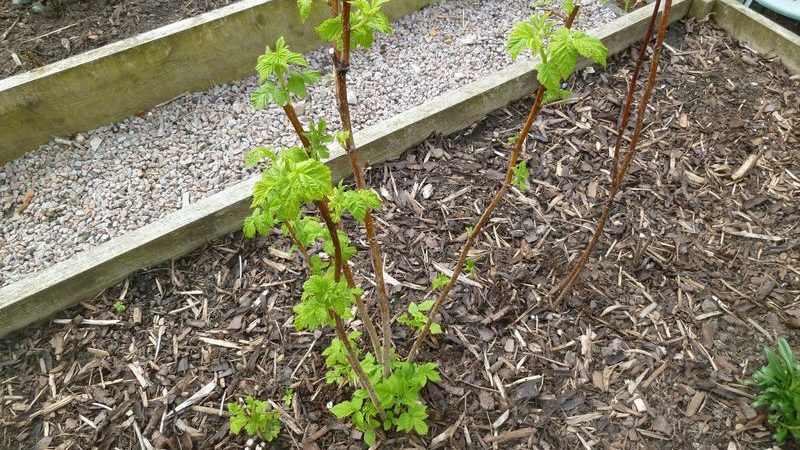
If you follow the recommendations for planting and caring for raspberries, there will be no problems with them. What experienced gardeners advise:
- Raspberries prefer fertile soil, but do not like excess nitrogen, potassium and phosphorus. Try to follow the dosage and do not overfeed the plant.
- For better wintering in late autumn, add 3 g of zinc sulfate and 5 g of manganese sulfate per 1 square meter to the soil. m.
- Cut off shoots that have completed fruiting at the root in the fall. Do the same with green shoots and growths; they still won’t have time to ripen. To be on the safe side, you can leave 20% of the fruit-bearing branches. Thus, you will receive the reserve necessary for the future development of the bush.
- In early fall, gradually reduce watering to a minimum and then stop completely. This stimulates lignification of shoots and helps raspberries survive the winter.
- Spraying with 2% Bordeaux mixture with the onset of frost will help increase the winter hardiness of the plant. If snow falls, throw it on the bushes or cover it with agrofibre.
- Do not forget to remove plant debris from the site. Insect pests and fungal spores overwinter in them.With the onset of spring, they intensify their vital activity.
- After the snow melts, treat the bushes with a 5% solution of Bordeaux mixture to prevent the spread of insects.
Conclusion
Raspberries are often planted in the spring. Depending on the region, planting work is carried out from March to June. In autumn, bushes are planted mainly in the south or when spring is early and dry. The most popular planting methods are bush and trench. It is important to follow the recommendations and maintain the distance between seedlings.
Remontant varieties of raspberries planted using the same methods. Before planting, the soil is loosened, fertilized with organic matter and minerals, and watered abundantly with clean water. Caring for a raspberry tree consists of abundant watering, fertilizing 2-3 years after planting, tying up bushes, pruning in spring and autumn, mulching the tree trunk and treating against diseases and pests.